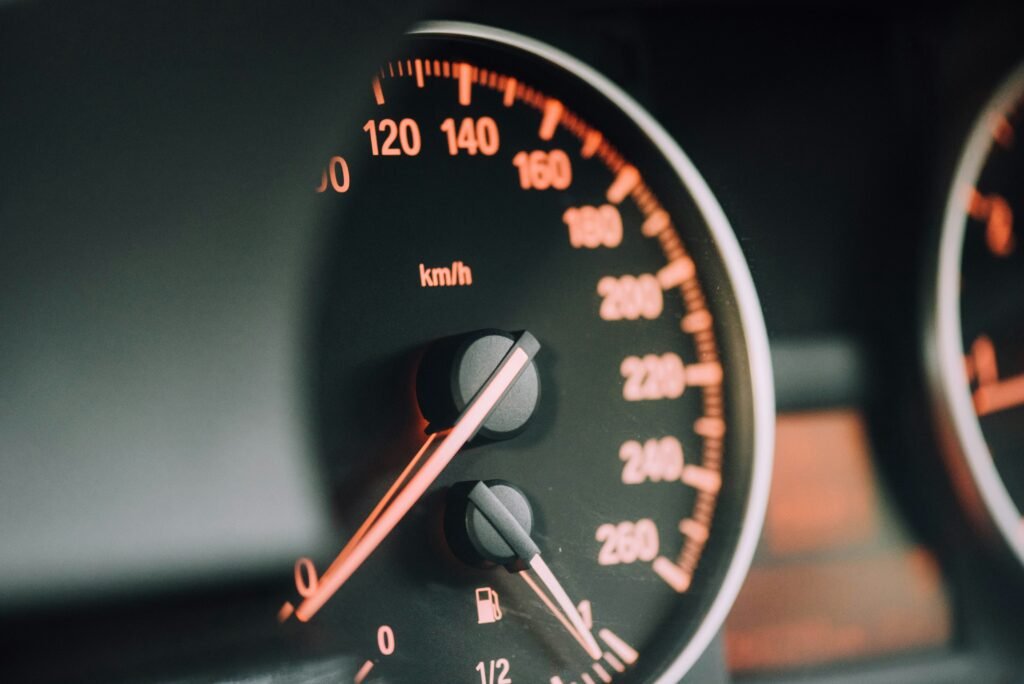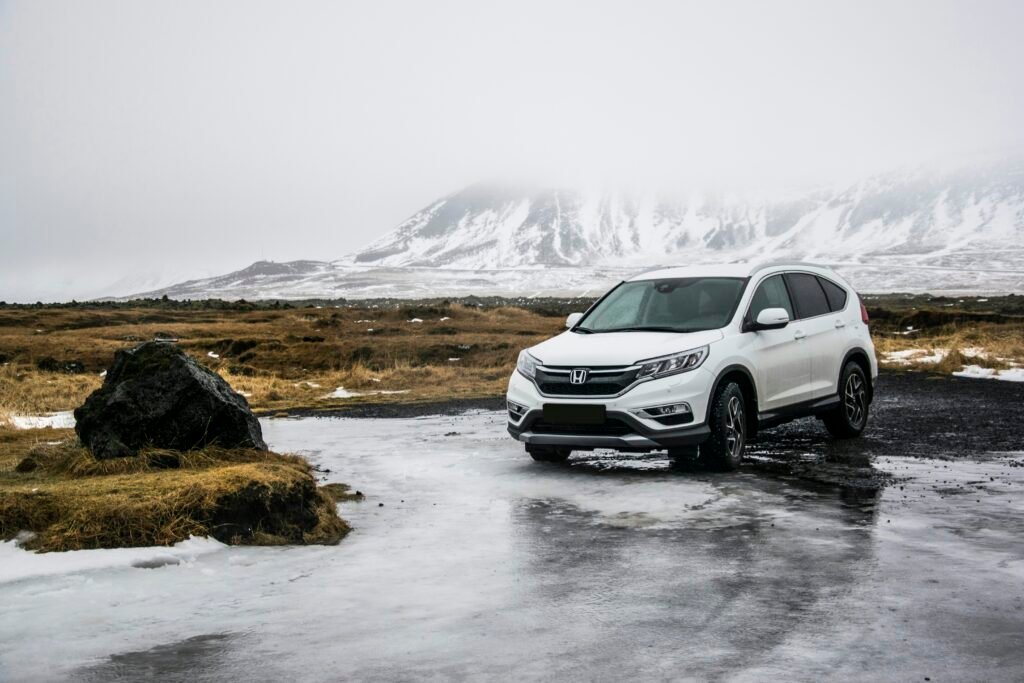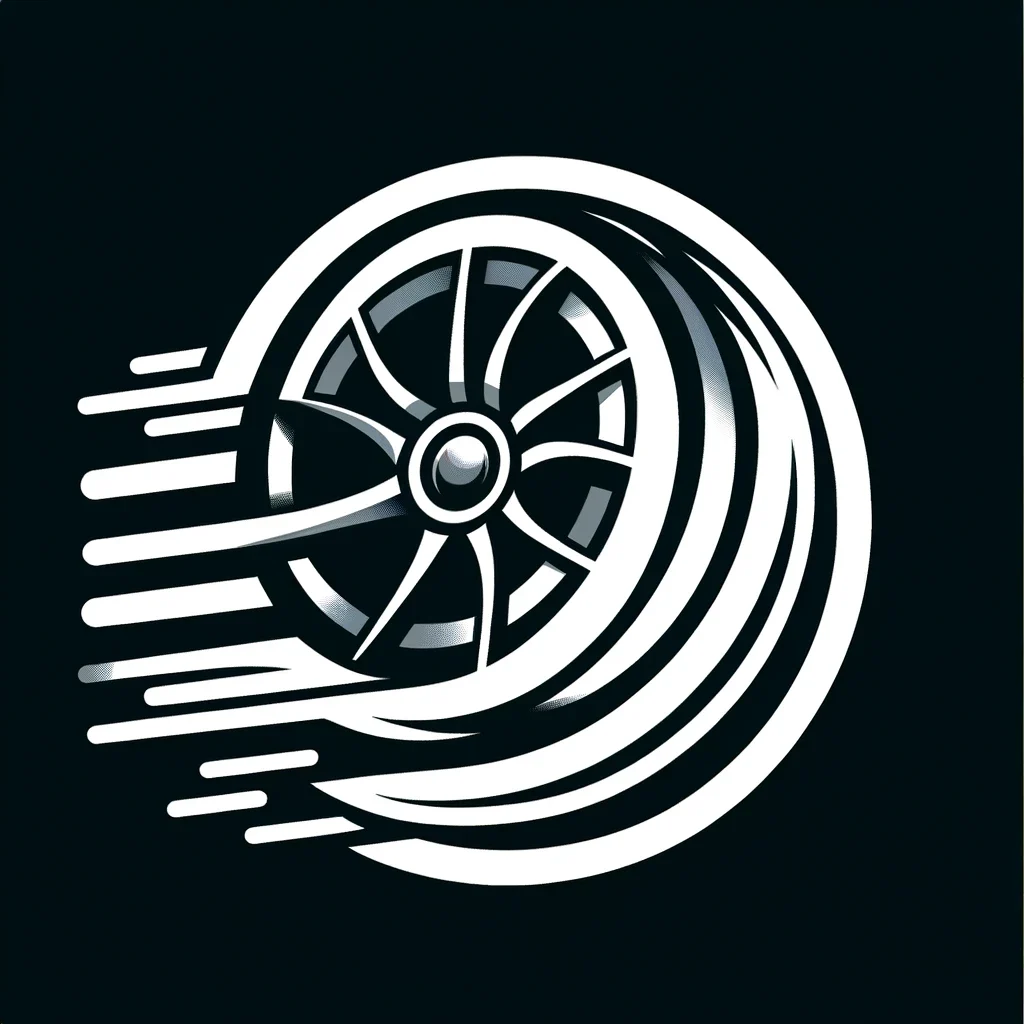You take pride in your car and want to keep it looking pristine for years to come. One area that often gets overlooked when it comes to maintenance is the rims. Those shiny wheels not only add style to your vehicle but also play a crucial role in its overall performance. In this ultimate guide, we will explore simple yet effective tips for preventing rim damage and wear, ensuring that your car remains in top shape and turning heads wherever you go. From proper cleaning techniques to avoiding curb rash, we’ve got you covered. So, let’s dive in and give your rims the TLC they deserve!
Choosing the Right Tires
When it comes to preventing rim damage, choosing the right tires is essential. You need to consider tire size and fitment, select the right tire type, and check the load rating and speed rating.
Consider Tire Size and Fitment
One of the first things you need to consider when choosing tires is the size and fitment. It’s important to select tires that are the proper size for your vehicle’s rims. If the tires are too small or too big for the rims, they can cause damage and wear over time. Refer to your vehicle’s manual or consult a professional to determine the right tire size for your rims.
Select the Right Tire Type
In addition to size, you also need to consider the type of tires you choose. The type of tire that is suitable for your vehicle can vary depending on factors such as weather conditions, terrain, and driving preferences. For example, if you live in an area with harsh winters, you might consider getting winter tires for better traction and control. On the other hand, if you live in a hot and dry climate, summer or all-season tires might be a better option. Research different tire types and their characteristics to make an informed decision.
Check the Load Rating and Speed Rating
When choosing tires, you should also pay attention to the load rating and speed rating. The load rating indicates the maximum weight a tire can safely carry, while the speed rating indicates the maximum speed at which a tire can safely operate. It’s important to choose tires with load and speed ratings that meet or exceed the requirements of your vehicle. Failing to do so can result in excessive stress on the rims and increase the risk of damage.
Maintaining Proper Tire Pressure
Maintaining proper tire pressure is crucial for both your safety and the longevity of your rims. Here are some important steps to follow:
Regularly Check Tire Pressure
Make it a habit to regularly check your tire pressure. It’s recommended to check the pressure at least once a month or before long trips. Insufficient tire pressure can lead to increased rolling resistance, uneven wear, and decreased fuel efficiency. On the other hand, overinflated tires can affect your vehicle’s handling and increase the risk of a blowout. Use a tire pressure gauge to accurately measure the pressure and adjust as necessary.
Inflate Tires According to Manufacturer’s Recommendations
To ensure the right tire pressure, always refer to the manufacturer’s recommendations. These guidelines can usually be found in your vehicle’s manual or on a sticker located on the inside of the driver’s side door jamb. Following the recommended tire pressure not only promotes optimal performance but also helps in preventing rim damage caused by improper inflation.
Consider Using Nitrogen
Consider using nitrogen to inflate your tires instead of regular air. Nitrogen molecules are larger and less likely to seep through the tire’s rubber compared to oxygen molecules, resulting in more stable tire pressure over time. Nitrogen-filled tires have been known to experience fewer pressure fluctuations, reducing the risk of rim damage due to underinflation or overinflation.

This image is property of images.unsplash.com.
Avoiding Potholes and Road Hazards
Potholes and road hazards can be a nightmare for your rims. Taking these precautions can help you minimize damage:
Stay Alert and Keep a Safe Distance
The best way to avoid potholes and road hazards is to remain alert while driving. Pay attention to the road ahead and keep a safe distance from the vehicle in front of you, allowing you enough time to react and maneuver around potential obstacles. By being proactive, you can avoid sudden and jarring impacts that can cause damage to your rims.
Slow Down on Rough Roads and Uneven Surfaces
When you encounter rough roads or uneven surfaces, it’s important to reduce your speed. Slowing down allows your vehicle’s suspension to better absorb the impact and reduces the likelihood of your rims hitting potholes or other road hazards. By maintaining a cautious and controlled speed, you protect your rims from unnecessary damage.
Avoid Potholes When Possible
If you spot a pothole or road hazard ahead, do your best to avoid it. Try changing lanes if it’s safe to do so or maneuver around the obstacle. By making a conscious effort to avoid potholes, you minimize the risk of your rims making contact with them, reducing the chances of damage or bent rims.
Driving Techniques for Rim Protection
Your driving habits can significantly impact the condition of your rims. Here are some driving techniques to help protect your rims:
Watch Your Surroundings and Avoid Curbs
To prevent curb rash and scratches on your rims, it’s important to be mindful of your surroundings. Take extra care when parking or maneuvering in tight spaces and be cautious of curbs. A momentary lapse in attention can result in your rims making contact with curbs, leading to unsightly and costly damage. Stay focused on your surroundings and avoid unnecessary contact with curbs and other obstacles.
Stay Mindful of Parking Lot Risks
Parking lots can pose various risks to your rims, such as tight parking spaces, shopping carts, and other vehicles. When parking, choose spots that provide ample room for opening doors without hitting neighboring vehicles. Avoid parking too close to shopping cart corrals or other potentially damaging elements. By being mindful and proactive, you can reduce the chances of accidental rim damage while parked.
Take Extra Care on Rough Terrain or Off-Roading
If you enjoy off-roading or frequently encounter rough terrain, it’s crucial to take extra precautions to protect your rims. Lowering tire pressure and investing in off-road tires with enhanced sidewall protection can help cushion the impact and reduce the risk of rim damage. Additionally, driving at a controlled speed and avoiding sudden jolts and impacts can significantly minimize the chances of sustaining rim damage while enjoying your off-road adventures.

This image is property of images.unsplash.com.
Proper Rim Cleaning and Maintenance
Regular cleaning and maintenance of your rims help keep them in optimal condition and protect against damage. Follow these steps:
Wash Your Rims Regularly
Make it a habit to wash your rims regularly. Brake dust, road grime, and other contaminants can accumulate on the rims over time, potentially causing damage if not properly cleaned. Use a mild soap or wheel cleaner, and thoroughly rinse and dry the rims after washing. Cleaning your rims regularly not only keeps them looking great but also helps prevent corrosion and other forms of damage.
Use Non-Abrasive Cleaners and Soft Brushes
When cleaning your rims, avoid harsh or abrasive cleaners that can scratch or dull the surface. Instead, opt for non-abrasive cleaners specifically formulated for rims. Soft-bristle brushes or microfiber towels are ideal for gentle cleaning without causing any damage. Take extra care with chrome or painted rims, as they can be more sensitive to harsh chemicals or abrasive tools.
Apply Protective Coatings or Sealants
Consider applying a protective coating or sealant to your rims after cleaning to provide an additional layer of protection. Rim coatings can help repel dirt and grime, making cleaning easier in the future. They can also protect your rims from the damaging effects of brake dust and other contaminants. Follow the manufacturer’s instructions for proper application and reapplication intervals to ensure optimal results.
Installing Mud Flaps or Splash Guards
Mud flaps or splash guards are accessories that help protect your rims from debris, mud, and water. Here’s what you need to know:
Benefits of Mud Flaps or Splash Guards
Mud flaps or splash guards can offer several benefits, including:
- Rim Protection: Mud flaps act as a barrier between your tires and the roadway, preventing debris and water from being flung directly at your rims.
- Easy Cleanup: By catching and deflecting road debris, mud flaps make cleaning your vehicle and rims much easier.
- Enhanced Style: Some mud flaps come in various designs and finishes, allowing you to add a touch of personal style to your vehicle while protecting your rims.
Installation Guide for Mud Flaps or Splash Guards
Installing mud flaps or splash guards is a relatively straightforward process. Generally, the steps involve:
- Acquiring the Right Fit: Ensure you purchase mud flaps or splash guards that are compatible with your vehicle’s make and model.
- Removing the Wheels (if Required): In some cases, the installation may involve removing the wheels to gain access to the appropriate mounting points.
- Attaching the Mud Flaps: Follow the provided instructions to attach the mud flaps securely to the vehicle’s body or wheel well.
- Testing and Adjusting: Once the mud flaps or splash guards are installed, be sure to test their placement and adjust as necessary to ensure proper coverage and protection of your rims.
Choosing the Right Mud Flaps or Splash Guards
When choosing mud flaps or splash guards, consider factors such as the material, durability, and compatibility with your vehicle. There are various options available, including rubber, plastic, and stainless steel mud flaps. Look for quality materials that can withstand different weather conditions and provide long-lasting protection for your rims.

This image is property of images.unsplash.com.
Using Wheel Spacers or Rim Protectors
Wheel spacers and rim protectors are additional accessories that can help safeguard your rims. Here’s what you need to know:
How Wheel Spacers Can Help Protect Rims
Wheel spacers are devices that increase the distance between the wheel hub and the rim, effectively pushing the rim outward. This extra space can help prevent the rims from rubbing against the vehicle’s suspension components, especially when using larger or wider tires. By maintaining proper clearances, wheel spacers can minimize the risk of damage due to contact between the rims and other parts of the vehicle.
Benefits of Using Rim Protectors
Rim protectors are products specifically designed to shield your rims from accidental curb rash and scratches. These protective films or strips are easy to install and act as a barrier between the rim and the curb. Rim protectors are available in different colors and finishes, allowing you to customize the appearance of your rims while providing an added layer of protection.
Installation and Maintenance Tips
When installing wheel spacers, it’s important to follow the manufacturer’s instructions carefully. Improper installation can lead to wheel wobble, handling issues, or even wheel detachment, which can be extremely dangerous. If you’re unfamiliar with the installation process, it’s recommended to seek professional assistance.
For rim protectors, thoroughly clean the rims before installation to ensure proper adhesion. Follow the instructions for precise placement, ensuring the protectors cover the areas most susceptible to damage. Periodically inspect the rim protectors for signs of wear or damage and replace them as needed to maintain their effectiveness.
Regular Inspections and Maintenance
Regular inspections and maintenance play a vital role in preventing rim damage. Here’s what you need to do:
Inspect Rims for Damage and Signs of Wear
Regularly inspect your rims for any signs of damage, such as scratches, dents, or cracks. Check for any bending or warping, as this can affect the overall performance and safety of your rims. Additionally, look for signs of wear, such as uneven tread patterns or bald spots, which may indicate alignment or tire pressure issues. If you notice any damage or signs of wear, address them as soon as possible to avoid further complications.
Address Issues Promptly
If you do discover any rim damage or signs of wear, it’s crucial to address them promptly. Ignoring these issues can result in more extensive damage, compromise the structural integrity of the rims, and potentially lead to safety hazards. Contact a professional rim repair service for guidance and assistance in resolving any problems.
Regularly Rotate Tires
Regular tire rotation is an important maintenance task that can help extend the life of your rims. By rotating the tires, you ensure even wear across all four wheels. Uneven tire wear can cause the rims to be unbalanced, leading to vibrations and potential damage. Follow the manufacturer’s recommendations for tire rotation intervals and consult a professional if you’re unsure about the correct rotation pattern for your vehicle.
Professional Rim Repair and Refinishing
In some cases, professional help may be necessary to repair or refinish damaged rims. Here’s what you need to know:
When to Seek Professional Help
If your rims have sustained significant damage, such as deep scratches, cracks, or bent edges, it’s advisable to seek professional rim repair services. These experts have the knowledge, skills, and specialized tools to assess the extent of the damage and implement the necessary repairs. Attempting to fix severe rim damage yourself can potentially worsen the situation or compromise the integrity of the rims.
Choosing a Reliable Rim Repair Service
When selecting a rim repair service, it’s important to choose a reputable and experienced provider. Look for shops that specialize in rim repairs and have a track record of high-quality workmanship. Read reviews and seek recommendations from friends or automotive enthusiasts to ensure you’re entrusting your rims to competent and trustworthy professionals.
Options for Rim Refinishing
If your rims have cosmetic damage or are showing signs of wear, rim refinishing can restore their appearance and protect against further deterioration. Rim refinishing typically involves a thorough cleaning, removal of scratches or imperfections, and applying a new protective coating or finish. Depending on your preferences and budget, you can choose from various finishes, such as powder coating, painting, or polishing. Consult with a professional to determine the best refinishing option for your rims.
Investing in Rim Insurance or Warranty
To further protect your rims from unexpected damage and repair costs, consider investing in rim insurance or warranty. Here’s what you need to know:
Understanding Rim Insurance Coverage
Rim insurance or warranty coverage is designed to protect you against the unexpected expenses associated with rim damage or repairs. Depending on the specific policy, rim insurance can cover various scenarios, such as curb damage, pothole impact, or cosmetic issues. It offers peace of mind and financial protection, ensuring that you won’t bear the entire cost of repairs or replacement in the event of damage.
Benefits of Rim Insurance or Warranty
Investing in rim insurance or warranty offers several benefits, including:
- Cost Savings: Rim repairs or replacements can be expensive, and having insurance or warranty coverage can significantly reduce or eliminate out-of-pocket expenses.
- Convenience: With insurance or warranty coverage, you don’t have to worry about finding a reputable repair service or dealing with the administrative aspects of the repair process.
- Added Protection: Rim insurance or warranty provides an added layer of protection, minimizing the financial risks associated with potential damage and ensuring that your investment is well-supported.
Choosing the Right Policy
When choosing a rim insurance or warranty policy, it’s important to carefully review the terms and conditions. Consider factors such as coverage limits, claim procedures, deductibles, and any exclusions or limitations. Take the time to compare different options and consult with insurance professionals to select the policy that best meets your needs.
In conclusion, preventing rim damage and wear requires attention to several important factors. By choosing the right tires, maintaining proper tire pressure, avoiding potholes and road hazards, employing driving techniques for rim protection, practicing proper rim cleaning and maintenance, installing mud flaps or splash guards, using wheel spacers or rim protectors, conducting regular inspections and maintenance, seeking professional rim repair and refinishing when necessary, and considering rim insurance or warranty, you can significantly increase the longevity and condition of your rims. Remember, taking proactive steps and being mindful of your driving habits and maintenance routine will help protect your investment and keep your rims looking fantastic for years to come.

